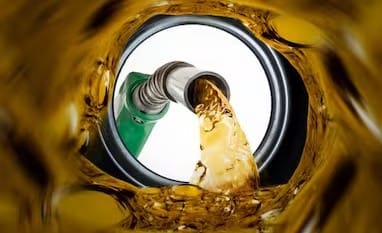When it comes to car care, therefore, one aspect that many car owners will not even consider is the need to protect the car paint. But covering the paint jobs or coats is important not only for the aesthetic purpose but also for increasing the car’s resale value. Perhaps the simplest technique most people have ever used to safeguard car paint is through waxing. But the question remains: does waxing really make a difference? This is a blog where we shall discuss the technology used in paint protection, the working of waxing, and whether waxing can affect your car paint in the longer run.
What Is Car Waxing?
Car waxing is the process of putting new wax on the outermost layer of your vehicle’s paint. The wax seals the paint and, in a way, shields it from other harms that include ultraviolet radiation, dust, abrasive particles, water, and various chemicals. Wax can be of plant origin, namely carnauba wax, or of synthetic material, which is man-made polymers with longer durability.
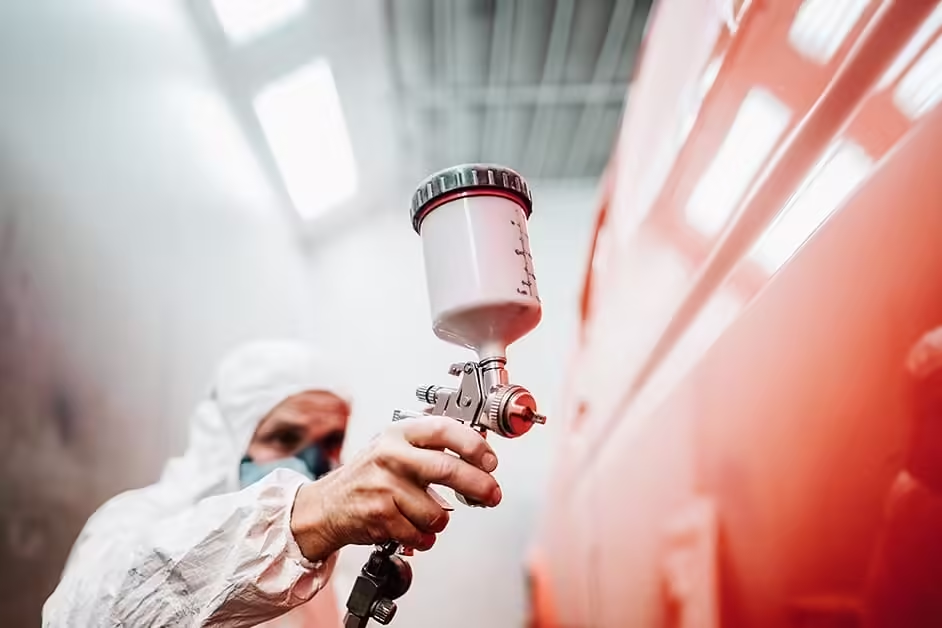
into the paint, hence it remains possible to remove the wax from the surface of the paint easily. The main role therefore is to serve as a barrier between the paint and external influences or contaminants that may affect it in the long run.
Understanding Car Paint
Before explaining how waxing makes a difference, it is important to first understand what car paint is. The use of cars today uses at least four layers to paint them. The most common layers include:
- Primer Layer: This is applied first and acts as the foundation for the rest of the layers.
- Base Coat: This is the colour layer that gives your car its beautiful look.
- Clear Coat: The clear coat is the top layer that adds gloss and protects the base coat from UV rays and minor damage.
The clear coat, while strong, is susceptible to damage from environmental factors, chemicals, and physical abrasions. If the clear coat gets damaged, it leaves the paint vulnerable to oxidation, fading, and even rust. This is where waxing comes in to offer an extra layer of defence.
How Does Wax Protect Car Paint?
Wax acts as a protective layer that reduces the impact of external threats. Here’s how it works:
- UV Ray Protection: Prolonged exposure to the sun’s ultraviolet rays can cause your car’s paint to fade and lose its shine. Wax reflects some of the UV rays, minimizing the damage to the paint.
- Hydrophobic Properties: Waxing gives your car a hydrophobic (water-repelling) surface. When it rains, water beads up and rolls off, taking dirt and contaminants with it. This helps to keep your car cleaner for longer and prevents water spots.
- Protection from Contaminants: Everyday pollutants such as bird droppings, tree sap, road salt, and industrial fallout can damage your car’s paint over time. Wax provides a protective shield that makes it harder for these contaminants to adhere to the paint surface.
- Smooth Surface: Wax fills in microscopic imperfections in the clear coat, giving your car a smooth finish. This smooth surface reduces friction, making it less likely for debris to stick to the paint.
Benefits of Waxing Your Car
Waxing your car has multiple benefits that go beyond just enhancing its appearance. Here are some of the key advantages:
1. Shiny Appearance
One of the most noticeable benefits of waxing is the immediate shine it gives to your car. The reflective qualities of wax bring out the colour of your car and make it look new, adding to its overall appeal.
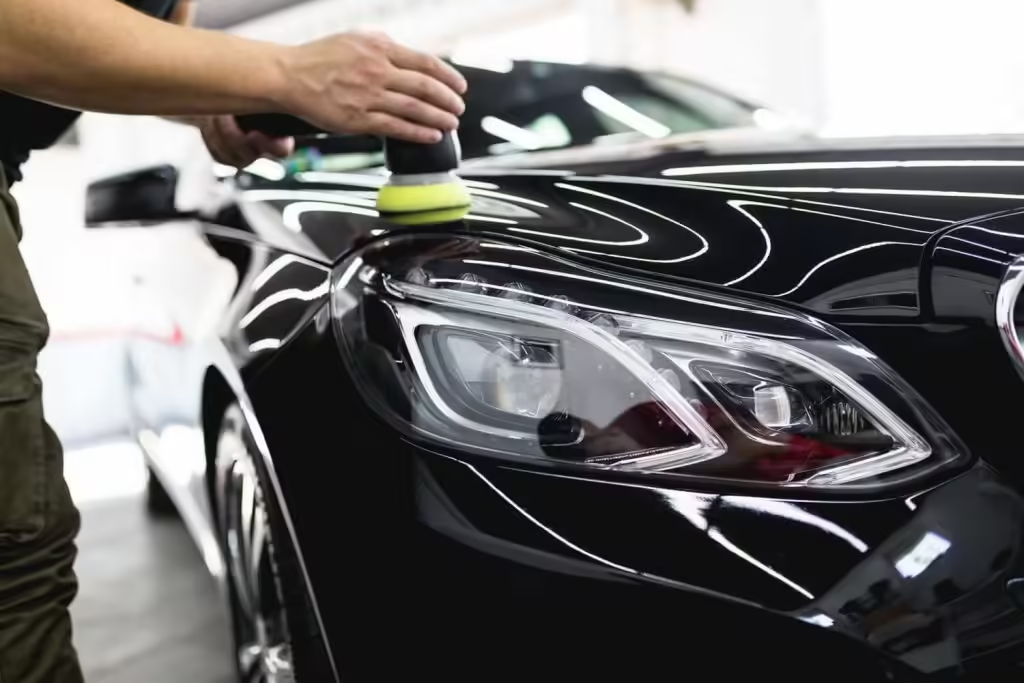
2. Prevents Oxidation
Oxidation occurs when oxygen reacts with the paint surface, causing it to fade or become dull. Waxing acts as a barrier against oxygen and helps slow down the oxidation process, preserving your car’s paint job for a longer time.
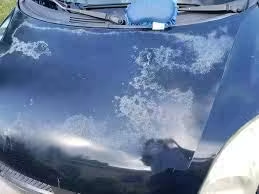
3. Scratch Resistance
While waxing won’t protect your car from deep scratches or major damage, it can provide a certain level of protection against minor surface scratches. The wax layer reduces the impact of small abrasions caused by dust, dirt, or brushing against objects.
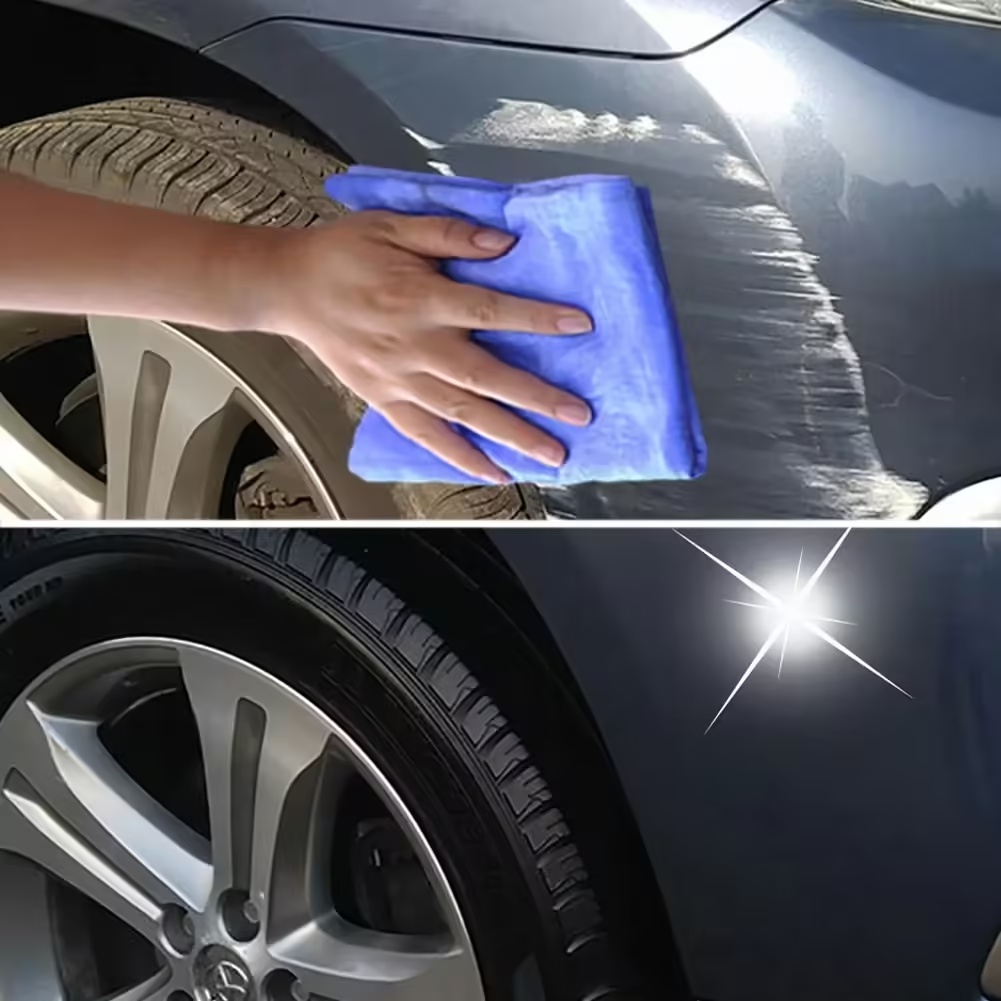
4. Easy Maintenance
Waxing makes it easier to clean your car. Since the wax creates a smooth and hydrophobic surface, dirt, grime, and other contaminants do not stick to the paint as easily. As a result, washing your car requires less effort, and your car stays cleaner for longer periods.5. Increases Resale Value
A well-maintained exterior can increase the resale value of your car paint. A shiny, well-protected paint job is one of the first things potential buyers will notice. Regular waxing ensures that your car’s exterior remains in excellent condition, making it more appealing to buyers.
Types of Wax: Which One is Right for You?
There are two main types of car paint or wax: natural and synthetic. Each has its own set of advantages and drawbacks.
Natural Carnauba Wax
Carnauba wax comes from the leaves of a Brazilian palm tree. It is widely regarded as one of the best natural waxes for cars due to its deep shine and rich finish. However, carnauba wax doesn’t last as long as synthetic wax, typically requiring reapplication every few months.
Pros: Deep, rich shine; natural ingredients.
Cons: Requires frequent reapplication; more expensive than synthetic wax.
Synthetic Wax
Synthetic wax, also known as polymer wax, is made from man-made materials. It is designed to offer longer-lasting protection compared to natural wax. Synthetic waxes can last up to six months or more, making them a more convenient option for people who do not have time for frequent waxing.
Pros: Long-lasting protection; more durable than natural wax.
Cons: Does not provide the same level of shine as natural wax.
The Science Behind Waxing: Does It Really Help?
Scientifically speaking, the purpose of waxing is to act as an extra barrier of protection on top of your car’s paint. Research has shown that applying a layer of wax can reduce the rate of paint degradation by shielding it from harmful UV rays, water, and contaminants.
While waxing won’t make your car invincible, it does help slow down the natural wear and tear process that happens over time. Consistent waxing can prolong the life of your car’s paint, making it look better and stay protected for longer periods.
How Often Should You Wax Your Car?
The frequency with which you should wax your car paint depends on a few factors, including the type of wax you use, your driving conditions, and your environment. Generally, it’s recommended to wax your car every 2-3 months if you use natural wax.
For synthetic wax, you may only need to reapply it every 4-6 months.If you live in areas with harsh weather conditions such as extreme heat, heavy rain, or frequent road salt exposure, you may need to wax your car more often.
Alternatives to Waxing: Are They Better?
In recent years, alternatives to waxing have gained popularity, including ceramic coatings and paint sealants. While these products offer longer-lasting protection, they are also more expensive and require professional application in most cases.
- Ceramic Coating: This is a liquid polymer that chemically bonds to your car’s paint. It offers superior protection and can last for several years, but the cost is significantly higher than waxing.
- Paint Sealant: Paint sealants are synthetic products designed to last longer than wax. They provide a similar level of protection but may lack the deep shine that wax offers.
Final Verdict: Does Waxing Make a Difference?
Yes, waxing does make a difference when it comes to protecting your car paint. While it may not provide the level of protection that more advanced treatments like ceramic coating offer, it is a cost-effective and easy-to-apply solution that can greatly extend the life of your car’s paint.
Waxing helps maintain your car paint appearance, protects against environmental factors, and preserves its value. Regular waxing, when done properly, can keep your car looking shiny and new for years to come.
Conclusion
In conclusion, waxing your car plays a crucial role in maintaining its car paint and overall appearance. While it may seem like a small effort, regular waxing can protect your vehicle from harmful UV rays, environmental pollutants, and minor scratches. It also adds a glossy finish that enhances your car’s aesthetic appeal, making it look well-maintained and new.
Though there are more advanced options like ceramic coatings, waxing remains a cost-effective and simple method for protecting your car paint. By incorporating it into your car care routine, you can preserve your vehicle’s value and keep it looking its best for years to come.
Ready to Make the Best Choice for Your Next Car?
At My Car Wisdom, we help you navigate the car buying journey with confidence. Whether you’re a first-time buyer or a seasoned car enthusiast, our expert reviews, in-depth guides, and tips ensure that you make informed decisions.
From understanding the latest models to comparing prices and features, we provide you with all the tools and insights you need. Explore, compare, and choose the perfect car for your needs.

Raja Yadav, the content writer at My Car Wisdom, brings a unique voice and style to our blog. With a knack for storytelling and a keen eye for detail, Raja ensures that every piece of content is informative, engaging, and easy to understand. His focus is on delivering high-quality articles that cater to both novice car owners and seasoned automotive enthusiasts.


